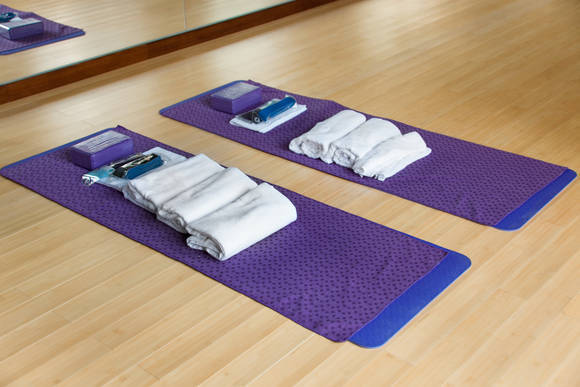Contrary to popular belief, yoga equipment are not just for beginners. Seasoned yogis put to good use yoga blocks, straps, bolsters, and blankets to make the most out of their practice. Even if you can reach your toes and bind behind your back, there are many ways that one can utilize yoga equipment to become even better. Here are some ways that both beginners and regulars can use various types of yoga equipment.
Blocks
Yoga blocks are rectangular props 4 inches x 9 inches x 6 inches in dimension and made out hard foam or sometimes cork. Beginners can make great use of a yoga block by using it to prop themselves up during standing poses like Triangle Pose (Trikonasana). They can be tilted in any way to allow for adjustments in height. They can also be used to support the knees in Lotus Pose (Padmasana) or any seated pose that requires the knees to touch the floor. Seasoned yogis still use yoga blocks to make sure that their thighs are squeezed together in Plank Pose (Chaturanga Dandasana). In fact, the block might have the most applications out of all the yoga equipment out there.
Straps
Yoga straps are like belts that you can loop at different lengths by way of a cinch bunckle. They're a great way for people whose shoulders aren't too open yet (or whose arms are naturally short in proportion to their bodies) to reach behind their back and bind. The Marichyasana Series of seated bound poses, for example, require you to twist your arms back around your knees in various ways. It also helps you reach your toes when your hamstrings are still tight in poses such as Seated Forward Bends (Paschimottanasana).
More advanced practitioners can use straps to loop around their arms for handstands for additional support so that their elbows don't buckle. They can also use it for standing leg poses where they can't quite grab their foot yet like King Dancer Pose (Natarajasana) or King Pigeon Pose (Eka Pada Rajakapotasana).
Bolsters
Bolsters are like firm pillows that are longer than they are wide, though they can come in a variety of sizes. They are best used in Restorative Yoga poses to support the belly, back, chest, or hamstrings for when you come into restful lying poses such as Reclining Bound Angle Pose (Supta Baddha Konasana), or even lying in Corpse Pose (Savasana), wherein the bolster is placed lengthwise under your spine. This helps elevate the heart and come into a deeper relaxation.
Blankets
Blankets are simply that – although in yoga these are made out of more fibrous knits that are thicker and more durable. They can be used in ways similar to yoga blocks and bolsters, adding support to various parts of the body. However, they're more versatile since they can be folded in any which way to adjust to your needs. They can be used on top of bolsters to give additional lift in the head or heart area, such as Reclining Hero Pose (Supta Virasana) or Downward Facing Hero Pose (Adho Mukha Virasana). They can also be sat on in the same way a block would be used, in addition to resting the knees in all sorts of bent-knee seated poses.
There's honestly no shame about using yoga props to assist your practice. As we have described above, there are so many ways props can be used to maximize the benefits of yoga while reducing the risk of injury. It helps build your confidence as you can observe your progress from being supported by a block or strap to being able to do a pose on your own. Finally, they can be fantastic tools to get you into rejuvenating resting poses to feel as comfortable and peaceful as possible.


